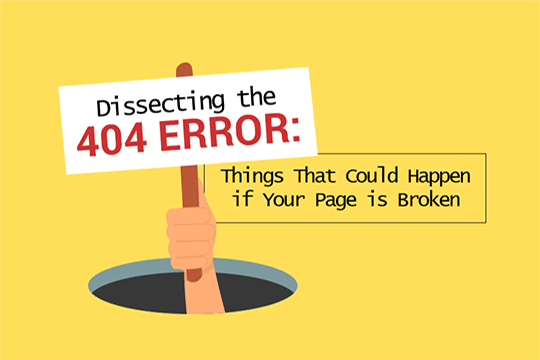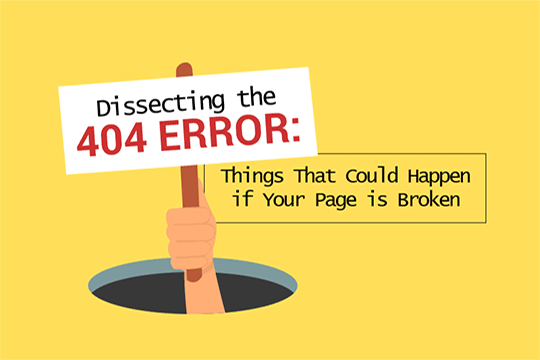Don’t Let “Page Not Found” Drag Down Your Website Performance

We’ve all run into it at some point: a broken link. Maybe you were following a trail of backlinks to try to get the origin of some statistic (I’ve traced many back trying to find out just how outdated a social media or digital marketing stat might be — you’d be amazed at how long some things continue to circulate!). Or maybe you discovered an error on your own website that explained why some pages weren’t getting the traffic you thought they should.
Either way, a 404 error is more than just irritating. For your website, it could mean serious damage to your reputation and performance, as Spiralytics oulines in this infographic.
The reasons you arrive at a 404 page can vary from a mistyped URL or misspelled link to a website that has been completely removed. When your page has a lot of 404 errors, it can cause users to leave and not return, and search engines will register your site as having a higher bounce rate, costing you authority and SERP rankings.

Taking time to find and fix 404 errors on your site can be a key step in your SEO strategy. Even just creating a custom 404 page can help you keep website visitors from instantly bouncing and instead redirect them to other relevant content on your site. (Check out the unique 404 pages shared in this TEDTalk)
Finding 404 errors is one process you should include when conducting a website audit, and planning in advance how you will minimize the impact of 404 errors in the future should be part of developing a strategy for redesigning or building a new site.
-1.png?width=1652&height=294&name=Jones(RGB)-1.png)












